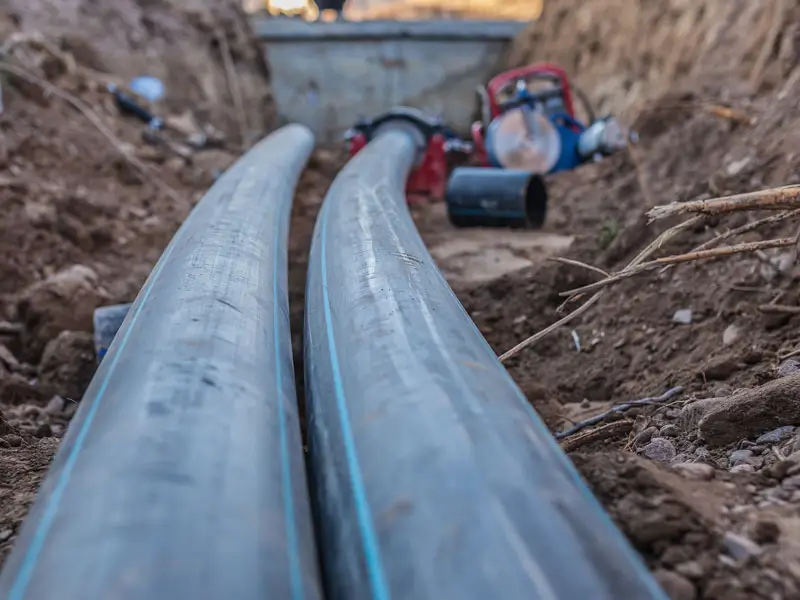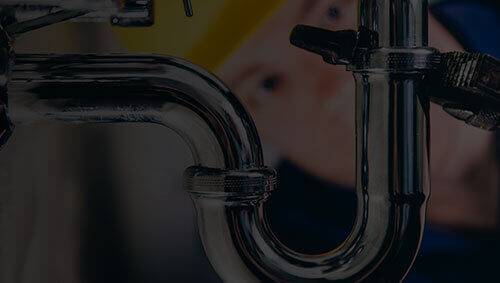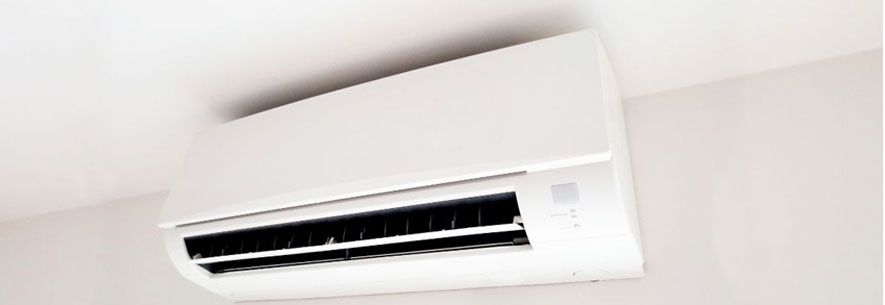Nobody wants to deal with a clogged sink that just won’t drain right. You know that sinking feeling when you hear gurgling noises from the pipes – please don’t let this turn into a full-blown drain disaster! While any backed-up sink creates a major inconvenience, a stubborn Hawaii clog can completely throw off your daily routine.
Our tropical island climate practically invites nasty sink obstructions to form. Aggressive plant roots constantly probing for moisture sources? Yep. Hard water leaving mineral buildup and corrosion inside pipes over time? You bet. Even rinsing food waste and grease contributes to gunky buildup down there.
But don’t surrender to that clogged sink yet! A few simple tips let you catch potential clogs early before they create a plumbing catastrophe. This guide covers the usual clogged sink culprits islanders face, the key red flags to watch for, and effective clearing methods – from DIY home remedies to knowing when professional help is needed – to get that sink draining like a champ again.
Understanding the Causes of Clogged Sinks
Common Causes
Like anything, clogged sinks happen for a reason. And knowing those typical culprits makes it easier to get ahead of potential drain disasters. For Hawaii homes, some of the most common causes include:
Food Waste and Grease – Rinsing off plates and pouring cooking grease straight down the drain may seem convenient, but it’s a surefire recipe for gunk accumulation. Food particles and grease congeal as they cool, sticking to pipe walls and slowly obstructing flow over time.
Hair – Particularly in bathroom sink and shower drains, loose hair strands that rinse away during hygiene routines form dense, matted clumps that snag on pipe interiors. Pet hair tracked into sinks can compound the issue too.
Mineral Buildup – Our island’s hard water supplies leave behind mineral residue inside drain pipes that gradually narrows pathways. Combine that with trapped hair or soap scum and you’ve got the perfect clogged drain cocktail.
Foreign Objects – From dropped jewelry to kids’ tiny toys, household objects that mistakenly get swept into sinks during cleaning or play act like drain stoppers when they lodge in pipes. Keep close tabs on loose items around sinks!
Identifying the Cause
Of course, knowing the general reasons for clogged sinks doesn’t always pinpoint your specific problem. But some telltale signs provide clues to what type of culprit you might be dealing with.
If drains back up primarily when running the garbage disposal, it likely points to a food waste or grease accumulation issue in that drain line. Slow drainage when showering or washing hair suggests trapped hair bundles.
Keep an eye out for any potential dropped items too – if a child is suddenly missing a hair tie or you can’t find that ring you took off to wash dishes, it may have gone straight down the drain!
With a likely cause identified, you can then determine the best clog-clearing approach tailored to that specific obstruction. Don’t go shooting in the dark – understand what you’re up against first. That positions you optimally to get that sink draining smoothly once more.
Immediate Actions to Take When You Notice a Clog
As soon as you detect those telltale signs of a clogged sink – gurgling drainage, water pooling, or an overall sluggish flow – it’s important to take immediate action to prevent the situation from escalating. Staying ahead of stubborn clogs saves you from much bigger headaches down the line. Here are some smart first steps:
Stop Using the Sink
First thing’s first – stop running any more water down that clogged drain ASAP. Continuing to use the sink while it’s backed up will only compound the issue by pushing more waste and debris into the already obstructed pipe. Cease any further sink use until you’ve had a chance to attempt clearing the clog.
Remove Visible Debris
Next, take a close look for any obvious debris you can safely remove from the sink basin or drain opening itself. Use a utensil or drain catch to carefully extract any hair clumps, food particles, or small objects you can access. Getting rid of that surface-level stuff first ensures you’re clearing the main clog itself, not just a surface blockage.
Try Boiling Water
For minor clogs, an easy home remedy is pouring a kettle of boiling hot water directly down the drain. The Heat helps dissolve and dislodge greasy buildups or pop free any minor obstructions like trapped food particles. Let the boiling stream of water thoroughly flush and agitate the clog for 60 seconds.
This simple boiling water trick can sometimes provide enough clearing power to restore regular sink drainage on its own. Just be extremely cautious of painful splashing when handling that boiling hot water!
Other Immediate Options
If boiling water alone doesn’t do the full trick, other quick at-home options include using a plunger or snaking the drain with a zip-it tool to try dislodging the clog manually. Avoid using commercial drain cleaners right off the bat – their harsh chemicals could potentially damage pipes if misused.
By acting fast as soon as you notice that first sluggish sink drainage, you have the best chance of clearing the obstruction before it becomes a total blockage nightmare. Start simple with clearing visible debris and boiling water to see if you can easily knock out the clog yourself. If not, then it’s time to escalate drain cleaning methods.
DIY Methods to Unclog Your Sink
If attempting to clear the clog by removing surface debris and flushing with boiling water didn’t fully restore proper drainage, it’s time to escalate to some more heavy-duty DIY unclogging methods. But no need to rush out for chemical drain cleaners just yet! There are still several effective home remedies worth trying first that are gentler on both your pipes and the environment.
Using a Plunger
One of the classic clogged drain solutions – putting that trusty plunger to work. For best results, ensure you’re using a classic cup-style plunger meant for sinks and flat surfaces, not the flange plungers made for toilets.
Start by clearing out the sink basin and filling it about 1/4 full with water to establish a tight seal with the plunger. Position the plunger directly over the drain opening, giving it a few quick downward plunges to force air through and dislodge the clog.
If you don’t get immediate drainage, keep plunging methodically up and down for 15-20 seconds at a time before breaking the seal, as this alternating pressure and suction helps gradually work through the obstruction. Plunging may need to be repeated several times to fully clear extremely stubborn clogs.
Baking Soda and Vinegar Solution
This classic home remedy relies on fizzy chemical reactions to help break up organic sludge blockages and deodorize drains.
Begin by pouring 1/2 cup baking soda down the clogged drain, followed by 1 cup of plain white vinegar. That instant fizzing reaction will begin working on the clog from the get-go, so let it sit for 15-20 minutes to fully fizzle out.
After letting the baking soda and vinegar penetrate, flush the drain thoroughly with a kettle of boiling water, which helps dislodge the debris loosened by the cleaning solution while also scouring away residual build-up.
Plumbing Snake (Drain Auger)
If basic methods fail to clear persistent clogs, your next heavy-duty option is physically snaking the drain with an auger or plumber’s snake tool. These long coiled wire cables allow you to directly access and drill through stubborn obstructions lurking deeper in the drainpipe.
Feed the snake cable carefully down the drain opening, cranking the auger handle clockwise until you encounter resistance from the clog. Continue methodically cranking to bore through and hook the clogged material, then slowly retrieve the snake back out in a reverse clockwise motion while carefully pulling the clog debris along with it.
Using a plumber’s snake does require some finesse to avoid accidentally damaging your drain pipes, so take care not to snap or over-torque the coiled auger cable.
Wet-Dry Vacuum
Here’s a handy trick for sinks with removable P-trap sections – use a wet-dry shop vacuum to create suction and pull out any non-solid debris that’s trapped in your drainpipe!
Once you’ve disconnected the P-trap, securely connect one end of your vacuum hose directly over the drain opening. Turn on the vacuum suction and carefully monitor as any backed-up gunk, hair, or sludge gets forcibly evacuated through the hose.
This vacuum clearance works best on non-solid obstructions before attempting to snake out anything more compacted. Just be sure your wet vac filter is clean and able to handle the drain discharge!
If you’ve exhausted all of these DIY unclogging methods without success, then it’s time to call in professional plumbing backup. Sometimes those solidly stuck sinks require specialized tools and equipment to fully remediate really stubborn drain clogs. Don’t risk damaging your pipes by pushing DIY tactics too far – know when to request expert help to get that sink flowing freely again.
Chemical Drain Cleaners
When faced with a really stubborn clogged sink that won’t budge no matter what home remedies you try, it can be tempting to reach for one of those handy bottles of chemical drain cleaner. But it’s important to understand the pros and cons before going the caustic chemical route.
Pros and Cons
The upside of chemical drain openers is their potent ability to dissolve through heavy, solidified gunk and obstructions with brute force. Formulas containing ingredients like sulfuric acid or lye create strong exothermic reactions that eat through clogs quickly and powerfully.
However, this aggressive chemistry is precisely what makes drain cleaners so caustic and hazardous if mishandled. Splashing can burn skin and eyes, while fumes prove extremely irritating to inhale. Drain cleaners also slowly corrode and deteriorate older metal plumbing over time when used excessively.
Safe Usage Guidelines
If you do opt to use a chemical drain cleaner product for clearing that stubbornly clogged sink, following proper safety protocols is an absolute must:
- Double-check that your pipes are approved for chemical treatment by consulting your home’s blueprints
- Wear protective gear like rubber gloves, safety goggles, and a respirator mask
- Carefully follow all product instructions for safe drain opener usage and application
- Open windows and run fans to fully ventilate the area and clear any fumes
- Never use drain cleaners in combination with other household cleaning products
- Store products securely away from kids and pets after use
Even when used correctly, harsh chemicals are still relatively indiscriminate and may fail to completely clear the toughest obstructions deep within drain lines. Repeated or excessive applications also accelerate the deterioration of older pipe materials.
Environmental Considerations
Beyond safety, the other major drawback of chemical drain openers is their environmental impact. Ingredients like sodium hydroxide, aluminum solvents, and bleach ultimately find their way into municipal wastewater systems where they disrupt natural ecosystems.
More and more eco-conscious homeowners choose to avoid these toxic chemicals entirely in favor of environmentally friendly clog removal methods like enzymatic bio-cleaners made from plant-based bacteria. While gentler, these natural options may require more patience than a quick chemical fix.
When facing a hopelessly clogged sink, calling in professional plumbers with proper equipment often proves safer than risky drain cleaner use. Their advanced tools like hydro-jetters can thoroughly scour and clear drain lines without resorting to harsh chemicals at all.
Preventing Future Clogs
No one wants to keep battling perpetually clogged sinks – the key is preventing those stubborn obstructions from happening in the first place! While clogs can never be completely avoided, some simple habits and preventative maintenance go a long way in keeping sink drains flowing freely.
Regular Maintenance
Just like any home system, your plumbing needs routine care to operate optimally long-term. Get in the habit of flushing drains with boiling water monthly to help dissolve away gradual buildups before they start congealing into clogs.
Every few months, follow up with a simple baking soda and vinegar fizzy drain cleaning to deodorize and clear away stuck-on grime. You can even create a safe preventative drain cleaning solution by mixing vinegar with liquid dish soap.
Proper Disposal of Waste
How you dispose of food scraps and other waste plays a huge role in clog prevention. Commit to never rinsing fats, oils, grease, coffee grounds, or fibrous food particles down the drain where they’ll solidify over time into nasty clogs.
Wipe off plates thoroughly into the trash or compost bin before washing dishes. Avoid indiscriminate disposal of items like hair, dental floss, facial wipes, or feminine products either – these don’t dissolve well and rapidly gunk up drainpipes.
Use of Drain Screens
Another easy preventative measure? Use affordable drain catch screens or strainers to cover sink openings. These simple mesh traps collect hair, food particles, and other debris before it has a chance to accumulate and clog pipes.
Just be diligent about frequently removing the collected gunk from drain screens so it doesn’t bypass the blockage over time. Bathroom sinks tend to catch hair most often, while kitchen sinks catch more food waste – stay on top of cleaning out those strainers routinely.
Regular Inspections
Of course, despite your best efforts, gradual buildup is still inevitable to some degree over years of household plumbing use. That’s why scheduling regular professional drain inspections with a plumber becomes so crucial.
Using video camera line inspections, plumbers can actually see inside your home’s drain pipes to assess interior buildup levels and material condition. They’ll provide specialized drain cleaning and recommendations to keep lines flowing well into the future.
Be proactive about simple drain maintenance, responsible waste disposal habits, and periodic professional service as needed. A little preventative care prevents major clogged sink headaches from snarling your daily routines! Get ahead of drain obstructions now to keep your sinks draining smoothly for years to come.
When to Call a Professional Plumber
Even for the most diligent DIYers, some clogged sink situations simply require the expertise and tools of an experienced professional plumber. While certainly an added cost, their services prevent further plumbing damage from improper unclogging techniques and get your drains flowing again quickly.
Recognizing Serious Problems
How do you know when it’s time to wave the white flag on that clogged sink and call in reinforcements? There are a few key signs it’s bigger than a typical DIY job:
- The clog is completely immovable despite multiple different unclogging attempts using a plunger, drain snake, baking soda/vinegar, etc. If it just won’t budge at all, more serious measures are likely required.
- Multiple sinks, fixtures, or drains are backing up simultaneously, suggesting the clog extends deeper into your main plumbing line from the sinks.
- You’ve snaked the drain repeatedly but the clog returns quickly, indicating stubborn obstructions like invasive roots that require professional-grade equipment.
- Foul odors persist even after efforts to clear the clog, which might signal the accumulation of hazardous sewer gases that need safe venting.
- DIY unclogging revealed cracks, structural damage, or other serious issues with aging, deteriorated sink plumbing that needs skilled repair work.
What to Expect
When you do call out a plumber for a clogged sink, they’ll begin by assessing the scope and location of the obstruction using techniques like drain cameras. This diagnosis informs their next steps.
Expect a professional plumber to then deploy more powerful tools and methods beyond the DIY basics. Hydrojetting uses highly pressurized streams of water to blast through clogs. Powered drain augers snake well past where a manual drain snake can reach. Chemical solvents may be used to dissolve stuck sludge.
In worst-case scenarios, problematic sections of pipe may require repair or replacement using techniques like pipe relining to fully restore flow.
Choosing the Right Plumber
Of course, you’ll want to go with an experienced, credible plumbing service for your clogged sink issue. Properly licensed and insured professionals with good references provide peace of mind.
Also, inquire about guaranteed upfront pricing to avoid surprise costs and look for plumbers who have experience specifically with the type of homes and plumbing systems in Hawaii. Familiarity with island conditions and typical clogged sink causes pays dividends.
While plumbers don’t come cheap, those service costs quickly prove worthwhile compared to risking potential water damage, costly pipe repairs, or even exposure to hazardous sewage backups. For severely clogged sinks beyond the scope of typical homeowner fixes, professional help truly is money well spent!
Don’t Let Clogged Sinks Drain Your Sanity
Nobody wants to deal with the hassle and potential mess of a backed-up sink. But understanding what causes clogs, spotting red flags early, and taking some preventative steps make staying on top of drain issues way more manageable.
Simple habits like routine drain maintenance, using drain catches, and responsible waste disposal really go a long way in preventing clogs before they start. But when you just can’t seem to fully unclog a sink yourself despite trying DIY methods, it’s probably time to call in the professionals. Don’t let the situation spiral into an even bigger plumbing crisis!
For Hawaii residents, local plumbing companies with decades of island experience make the wise choice when facing stubborn clogged sinks. Outfits like Steve’s Plumbing understand the unique challenges our tropical environment and soil conditions create for residential plumbing systems.
With specialized equipment like hydro-jetters and pipe relining tools, our skilled teams can diagnose tough clogs that DIY methods can’t dislodge, then comprehensively clear and restore full drainage. No more wrestling with clogged sinks disrupting your daily flow!
Stop losing your mind over blocked drains and funky sink backups. Bring in the trusted local experts who’ve seen it all when it comes to drains. Companies like Steve’s have your back with decades of experience tackling every plumbing obstacle our islands can dish out. Give us a call at (808) 563-4054 to get those sinks draining freely again!



